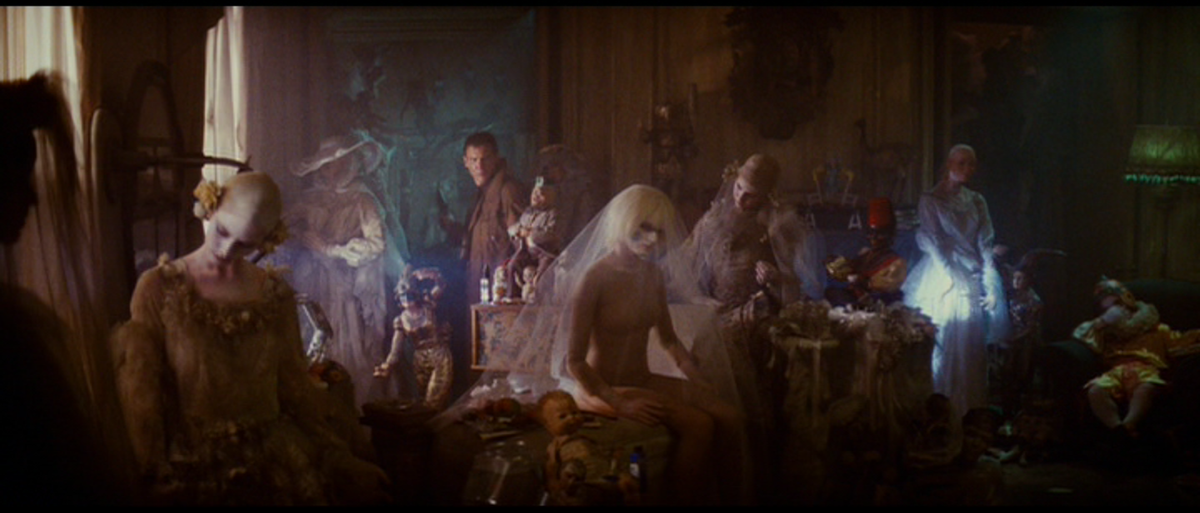Deciding whether a film is good or not is subjectable. Depending on the film genre an enjoyable film will have a suspenseful, twist and exciting plot to immerse the audience into the world and story created. Yet to create a film directors use the four basic components that are usually involved to make a film “good”. The four main components are editing, mise-en-scene, cinematography and sound, these 4 micro elements tie film production together.
The use of editing in film is to create the general idea behind the film. Editing in narrative film, is the coordination of one shot with another in order to create an artistically pleasing, meaningful whole. The
system of editing in narrative film is called continuity editing – its purpose is to create efficient, functional transitions. The editing of a film is a key feature as the transitions between shots need to be clean and sensible, following the plot of the film. Not having a good understanding of editing can make transitions choppy, making the storyline hard to understand and follow, allowing for the audience to become uninterested or bored.
Mise-en- scene is a term used to describe the setting of a scene in a play or a film. The mise en scène is a catch-all for everything that contributes to the visual “look” of a production, it means “placing on stage.” Mise-en-scene creates the look and feel of the film really piecing together the world they’ve created. It’s a brilliant way for directors to go into detail with their scene design, getting it absolutely perfect. Without mise-en-scene, films would have no personality, as every film is designed in many different ways.
Cinematography involves such techniques as the general composition of a scene; the lighting of the set or location; the choice of cameras, lenses, filters, and film
stock; the camera angle and movements; and the integration of any special effects. These components create mood and the atmosphere of a film, without it the world wouldn’t be believable, more dull and boring. Using cinematography to tell the audience how a character is feeling instead of using dialogue is a extremely effective feature as constantly using dialogue gets repetitive.
Sound is another important factor in creating the atmosphere in film. It’s a great way to make a scene tense and suspenseful in a simple and effective way. Sound in a movie includes music, dialogue, sound effects, ambient noise, and/or background noise and soundtracks. Some sort of sound is always used to enhance the movie experience.
Theses are other elements to creating a “good film” but not used as much as the four main components.
● Theme- The central idea of the film, what is the film about? The theme of the story. A specific and distinctive quality, characteristic. Or a melodic subject of a musical
composition or movement.
● Genre- Genre is the category a film is placed in regarding the narrative elements.
Film genres are important for screenwriters and film audiences because they establish a tonal expectation. Some basic movie genres include: Action: Movies in the action genre are fast-paced and include a lot of action like fight scenes, chase scenes, and slow-motion shots.
● Message or Value- A way of thinking or instruction about how to behave that the film communicates to the audience. How are we told to think about the themes? relative worth, or importance of something.
● Representation- This is the way a media text is put together. In a film this includes the editing and choice of camera angles.
● Narrative- Narrating tells a fictional or fictionalized story, event or narrative. The main features of a narrative film are story, plot, character, diegetic and non-diegetic elements, time, space, and narrative perspectives.
● Style- Style is the way a movie is filmed, as in the techniques that are used in the production process.
● Authorship- The idea was that a film is most valuable when it is the product of the director, and his personal style. The influences of the director can be seen through all of his works, often at times exhibiting aspects of their personal life portrayed throughout each film.
Looking at all of these different elements to create film shows a balance to what directors and filmmakers should be interpreting into their film. Yet with this not all directors who add all of these elements into their film, create “good” films, it’s how they use them, maybe not even using all of them.






